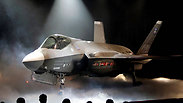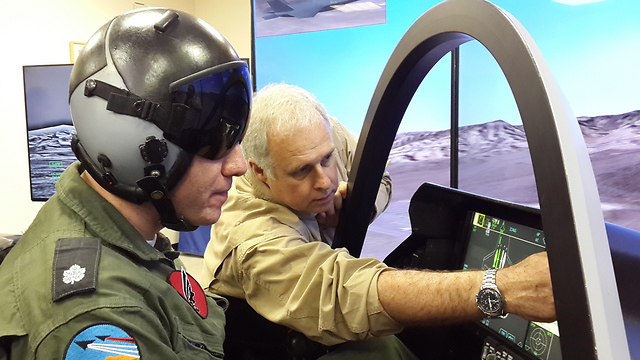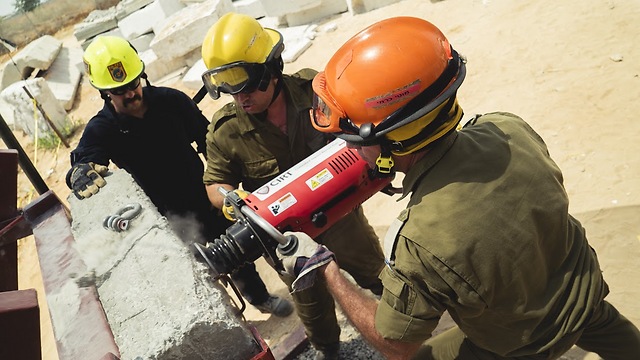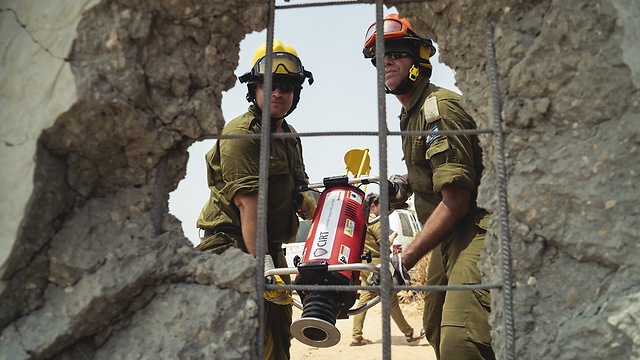
WATCH: New equipment to offer IDF major technological edge
New technologies will allow the IDF to conduct more challenging missions, while shortening response times in search and rescue operations.
Sixteen months before the arrival of the IAF's newest F-35A aircraft, the American manufacturer Lockheed Martin has conducted a successful first test of the aircraft's four barrel Gatling gun. The tests where conducted on the ground in the beginning of the month at Edwards Air Force base in California.
During the test, 181 25 mm bullets where fired from the F-35A's multi barrel cannon. Lockheed Martin said in a statement that the cannon is fixed in the aircraft's left wing base in order to allow for accurate fire during air-to-air and air-to-ground operations.
The futurist aircraft, which has been named "Adir" ("Mighty") by the IAF, is set to complete ground testing for its cannon this month. Aerial testing is set to be completed by the fall. The aircraft's testing period is set to end in 2017. The F-35A is set to field an operational cannon along with additional offensive combat systems, including internal weapons bays which help the aircraft maintain its stealthy radar signature.
Israel currently plans to purchase two squadrons of the future generation fighter. The purchase and absorption of the first squadron of 19 aircraft is set to be completed by 2019. The first team of squadron personnel has already been established at Nevatim airbase, where the F-35A will be based, and includes the first pilots to undergo transitional training on the F-35A in the US, as well as a squadron commander. In recent months, Nevatim airbase has received the F-35's immersive simulator which will help enhance pilot training.
Life saving tech
The IDF's Homefront Command has recently taken delivery of the CIRT (control impact rescue tool), and has already put it to the test in an exercise with the combat soldiers of the command's national search and rescue unit. The exercise was held in the run up to the system being declared fully operational in the coming weeks. Until recently, the sole operator of the rescue tool was the US National Guard.
The new tool is set to usher a real revolution within the Homefront Command's national search and rescue unit, allowing teams to reach victims trapped under rubble in record time. The tool is useful in all rescue operations be it caused by the destruction from a missile attack in a future war, or in the wake of a deadly earthquake, or a possible building collapse.
The concrete smashing tool can break through 20 cm-thick reinforced concrete, including bunker or reinforced room walls, which are common in Israeli homes. The system unleashes the power of 3,000 Joules (a unit of energy measurement) in a blow, compared to the 100 Joules produced by the current top of the line concrete breaking hammers in the command's inventory.
The new tool can smash a 40-50cm diameter hole in a concrete wall, and is five times faster in reaching a victim. The tool allows rescue teams to punch a hole big enough for a rescuer or a stretcher through rubble in a matter of only 10 minutes, compared to the 40 minutes to an hour with the previous tools.
"Time is a critical factor in saving the life of an injured person who is trapped between the ruins, and possibly losing blood and could die as a result. The golden hour for saving a life in emergency medicine is primarily based in reaching the injured person quickly," the Homefront Command stated.















